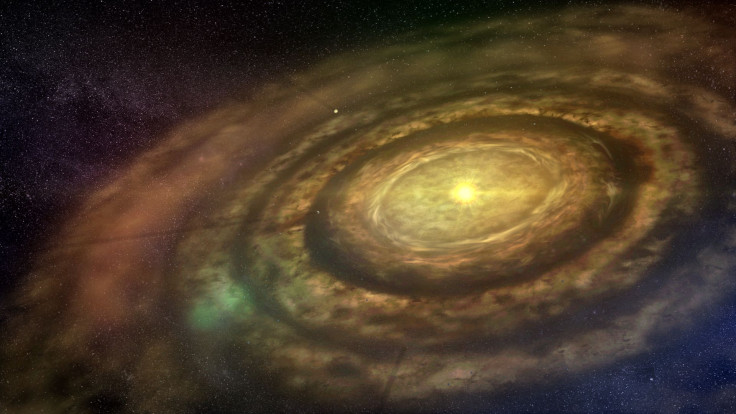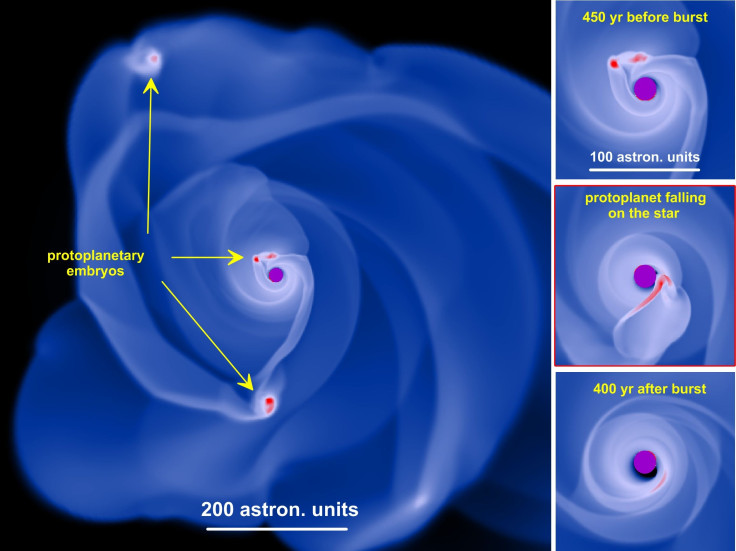Young Stars Take Crazy Cosmic Ride To Celestial Maturity

Young stars, like some people, don't have an easy time transitioning into adulthood, according to a new study released Friday. Instead of taking the slow-and-steady approach to maturity, stars undergo periods where they take on large quantities of matter from their surrounding protoplanetary disk. These violent outbursts alter the theory of stable growth within a star's disk.
Researchers from Taiwan, Japan and the U.S. used the Subaru Telescope's near-infrared capabilities to peer through the dusty disks of four young stars.
In the beginning stages of star formation, these objects are surrounded by large disks of dust and gas, known as protoplanetary or accretion disks. These disks soon break up into smaller clouds that, due to their weight, begin to collapse. At the center of these collapsing clouds are soon-to-be stars. A star is born as it accumulates more matter. The material within the cloud that's not used to form a star could form other celestial objects such as asteroids, comets or planets.
Star formation was theorized to be a rather orderly affair as these objects grew at a steady rate over time. The new study, published in the journal, suggests the dust and gas from the rotating cloud surrounding the star onto the object itself occurs in dramatic events akin to throwing logs onto a fire. The astronomers observed massive increases in brightness, up to a factor of 1,000, in some disks. In the case of FU Orionis, located in the constellation Orion, an increased brightness of 250-fold lasted for almost 100 years.

"If we can prove that most stars undergo such episodes of brightening caused by disk gravitational instability, this would mean that our own sun might have experienced several such episodes, implying that the giant planets of the solar system may in fact be lucky survivors of the sun's tempestuous past," Eduard Vorobyov, an author of the study from the Astrophysical Department of Vienna University, said in a statement.
The increased brightness was due to dense cloud clumps that fell into the stars due to gravitational instability within the disk, according to the researchers based on models of the stars' behavior. Using the Subaru Telescope, the researchers discovered large arms and arcs of matter around four stars in periods of increased brightness.
© Copyright IBTimes 2024. All rights reserved.





















